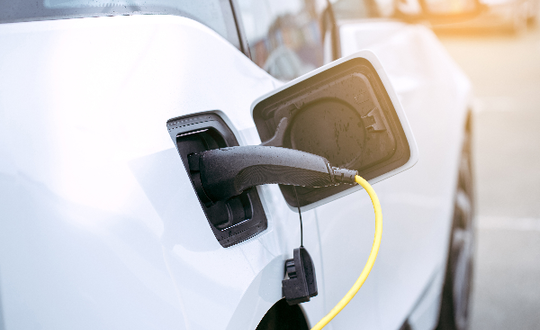Implementing an Agile Supply Chain for EV Batteries in the US and Latin America (Environment + Energy Leader)
Apr 18 2023
An audio summary of this article is available in the player below. Scroll to keep reading.
Listen and subscribe to Womble Perspectives wherever you get your podcasts.
Note: This article was written by Lisa Rushton and first published by Environment + Energy Leader. It is reprinted here with permission.
Governments in both the US and across Latin American support the growth of the electric vehicle (EV) industry and are actively working to construct Agile Supply Chain principles, particularly in connection with EV batteries. An Agile Supply Chain is a set of practices and strategies designed to enhance flexibility and responsiveness based on customer demand, market conditions, and other unknown variables. Agile Supply Chain methods optimize the flow of materials, information, and products throughout the supply chain while reducing waste and minimizing costs. Overall, this practice improves efficiency and reduces costs by improving response to often volatile market conditions.
Electric vehicles have become a priority means to greenhouse gas emission reduction goals. Globally, we see government intervention to provide incentives (grants, tax breaks, and subsidies) to promote and support the EV battery industry. Such support is designed to grow the market, hence necessitating the implementation of an Agile Supply Chain. Here in the United States, there are a multiplicity of resources including those awarded by the Advanced Manufacturing Office (AMO) within the Department of Energy (DOE), which offer funding opportunities to companies developing innovative manufacturing processes, especially related to EV batteries. The primary goal here is to lower the manufacturing costs of advanced batteries, while also improving performance.
The DOE Vehicle Technologies Office (VTO) offers funding opportunities through its Advanced Vehicle Technologies Research program to support the research and development of advanced battery technologies and manufacturing processes. And the Advanced Research Projects Agency-Energy (ARPA-E) within DOE empowers energy researchers through funding and assistance for projects that are high-potential, high-impact – yet nascent- energy technologies too early for private-sector investment. Earlier this year, ARPA-E announced $42 million in funding for 12 projects to strengthen the domestic supply chain for advanced EV batteries.
The federal government also created, under the Consolidated Appropriations Act of 2021, an advanced energy investment tax credit (ITC) and a manufacturing tax credit (MTC), both of which can be used to augment financing for EV battery manufacturing and related supply chain projects. The ITC is worth up to 30% of the qualified investment and is available until December 31, 2026. The MTC is also worth up to 30% of the qualified investment and is available until December 31, 2025. And more recently, the Inflation Reduction Act (IRA), established massive EV 2023 tax credits that are strictly tied to 40 percent of the EV battery content (by value) extracted or processed in the United States or one of its 20 fee trade partner nations. That 40 percent scales to 80% in 2026. The IRS also established tax credits, predicated on the amount of energy a battery produces. The intent is to effectively cut US battery production costs by nearly 50%.
As many Latin American countries have free trade agreements with the United States, they too are poised to benefit from the provisions in the IRA. At the same time, countries throughout Latin America are otherwise taking steps to develop a battery supply chain. Chili, Argentina, Bolivia, and Brazil appear to have the greatest potential.
Chile, for example, is already a major supplier of lithium to global markets and has the largest lithium deposits in the world. Metal is a key component in electric batteries. Argentina, Bolivia, and Brazil also have significant lithium deposits and are exploring opportunities with Chile to develop their own electric battery industries. The so-called lithium triangle of Argentina, Chile, and Bolivia accounts for more than half of global lithium resources, and both Brazil and Argentina have automobile manufacturing experience. So far, Latin America has seen limited success moving into higher-value lithium products — let alone making batteries or EVs on a commercial scale. But political will, technological shifts, geopolitical tensions, and investment may aid their push.
For these countries to develop a complete electric battery supply chain, there must be sufficient infrastructure and workforce development. To that end, these countries should seek out opportunities to attract foreign investment into their EV battery supply chain through incentives and support, like what we are seeing in the US, by offering tax breaks, subsidies, and streamlined regulations. This will encourage the growth of a much-needed EV battery ecosystem that will not only support local economies but will expand the domestic and global markets. It is quite possible that the aforementioned-battery content requirements outlined in the Inflation Reduction Act may serve as the external driver of an EV battery economy in South as well as North America.